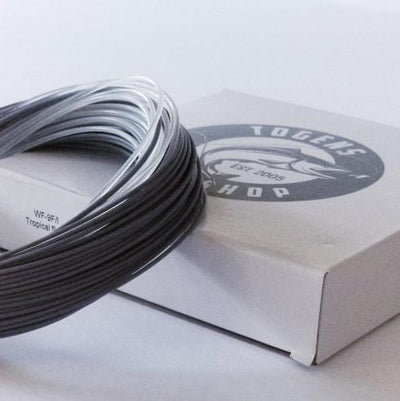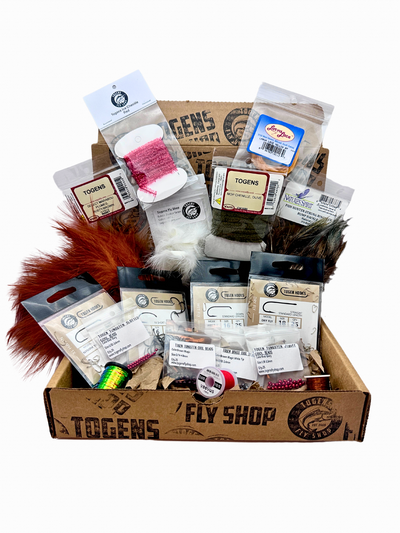Highly Effective Fly Fishing Techniques – Saltwater Tactics

Whether we’re talking about preserving meat, seasoning a basket of fries, or keeping our roads drivable in icy precipitation – we all need a little salt in our lives. Saltwater fly fishing may very well be the most exhilarating endeavor a fly angler can pursue. With the amazing aerial acrobatics of tarpon and lightning fast runs of silver ghosts, saltwater fish are the stuff of legend for anglers the world-over. In this post, we’re going to discuss the most essential techniques, tactics and gear you will need to be prepared for all the salt has to offer!
Challenges of Saltwater Fly Fishing
Many sought-after saltwater species are found in demanding environments that involve wind, surf and intense, tropical heat. In addition, the salt is a strong corrosive element that can be brutal on fishing gear. Let’s discuss some of these unique challenges of tropical/warm water fisheries.
Overcoming Wind & Surf
One of the challenges of saltwater fly fishing is the impact of wind and surf on an angler’s ability to accurately place a fly at varying distances. Unlike nymphing to an unseen steelhead, much of saltwater angling is sight casting to a moving target - be it a bait ball chased by roosterfish, a cruising bone, or a school of rolling poons. There are at least two factors that can really help the angler to overcome the wind & surf:
- Fly Line Selection. Choosing the right fly line is absolutely essential for saltwater fly fishing. A fly line with a heavy, short taper section designed to cut through wind and over surf is ideal. An aggressive taper also makes it easier to turnover large flies. In addition, the best lines are coated to help the line glide through the rod guides.
- Hauling. In order to achieve distance while casting into wind, “hauling” is a critical skillset. In simple terms, a haul involves pulling down on the line (with line retrieving hand) while casting to increase line speed, and ultimately achieve greater distance. A double haul is simply hauling on both the forward and the back cast. While hauling requires some practice to learn, this technique has many applications beyond saltwater.

Withstanding Sun & Heat
Cabo San Lucas, the flats of Cuba and the clear waters of Belize all share one commonality – intense ultraviolet rays and plenty of warmth. Before embarking to any warm water destination consider making a checklist of items needed to minimize sun exposure. You may wonder why we are talking about sun exposure on a fishing blog, but the truth is over exposure is always a risk while fishing in heat, and it’s something that can literally make or break a trip. While not an exhaustive list, here’s a starting point:
- Polarized sun glasses. Essential for seeing your quarry, protecting your eyes, and preventing constant squinting against the sun’s reflection on the water.
- Buff/ Sun Gaiter. In recent years, the buff has really become a popular way to protect your face and neck from the sun.
- Clothing with Built-In UPF. While not a new technology, fabric rated for ultra-violet protection is increasingly available with new and innovative designs
- Line Stripping Gloves. These serve a dual purpose by protecting your hands from the sun and from the friction created by the accumulation of salt on your fly line.
Exciting Quarry
Saltwater fly anglers pursue some of the most trying species encountered anywhere in the world. Check out this short list:
- Bonefish – While these fish will readily take a well placed fly, new bonefish anglers will find them difficult to spot. Having a guide to help you find them will significantly increase your chances on the water.
- Giant Trevally – Insanely ferocious, these fish crush flies. Once on the line, get ready as GTs make lightning runs and often change directions and putting you into backing in no time flat!
- Permit – Need I say anything more then mention the name! These fish require accurate casts, are finicky eaters, and are notoriously difficult to catch.
- Tarpon –These goliaths of liquid steel can reach epic sizes and make stunning aerial displays – remember to bow to the Silver King!

Line Retrieval
While a single hand retrieve works great for most applications, this method is not always quick enough for aggressive saltwater quarry. For this reason, I recommend learning the two-handed retrieve. This method involves tucking the rod between your knees or under your arm and using a hand-over-hand retrieve. This technique enhances presentation by allowing for greater variability in retrieval rates and works great when fish are feeding aggressively.
Rods & Reels
When outfitting for the salt, the first consideration is what kind of quarry you will be pursuing – this will determine the weight of rod and reel you will need. For example:
- Bonefish – 7 to 9 weight
- Permit – 8 to 10 weight
- Tarpon – 9 to 12 weight
- Giant Trevally – 12 weight

In addition, rods and reels that are designed specifically for saltwater are recommended. Saltwater rods are typically 9-foot rods (or longer) with corrosion-resistant components. Reels for large saltwater quarry should have large arbours and sealed drag systems (protects the internal components from sand and salt).
Fly Selection
When selecting flies for the salt, we are generally imitating a bait pattern geared for specific behaviour of our quarry. For example, for Bonefish & Permit crab and shrimp patterns are a common choice. Crab patterns are generally more appropriate when fish are tailing, whereas shrimp patterns more appropriate when fish are cruising. Finally, one of the best things to do when selecting flies is to speak with a local guide or fly shop owner about specific recommendations for patterns that are known to be effective in the area.
Seasoned for the Salt
To optimize your fly fishing game in the salt, you need to be equipped with the right skills, knowledge and gear. Specifically, warm water fisheries demand our respect. The saltwater fly angler should anticipate and prepare for the challenges that wind, surf and heat will present and be appropriately outfitted for the quarry they are pursuing. This preparation and knowledge will, in turn, make you well-seasoned (pun-intended) for angling the salt!




















